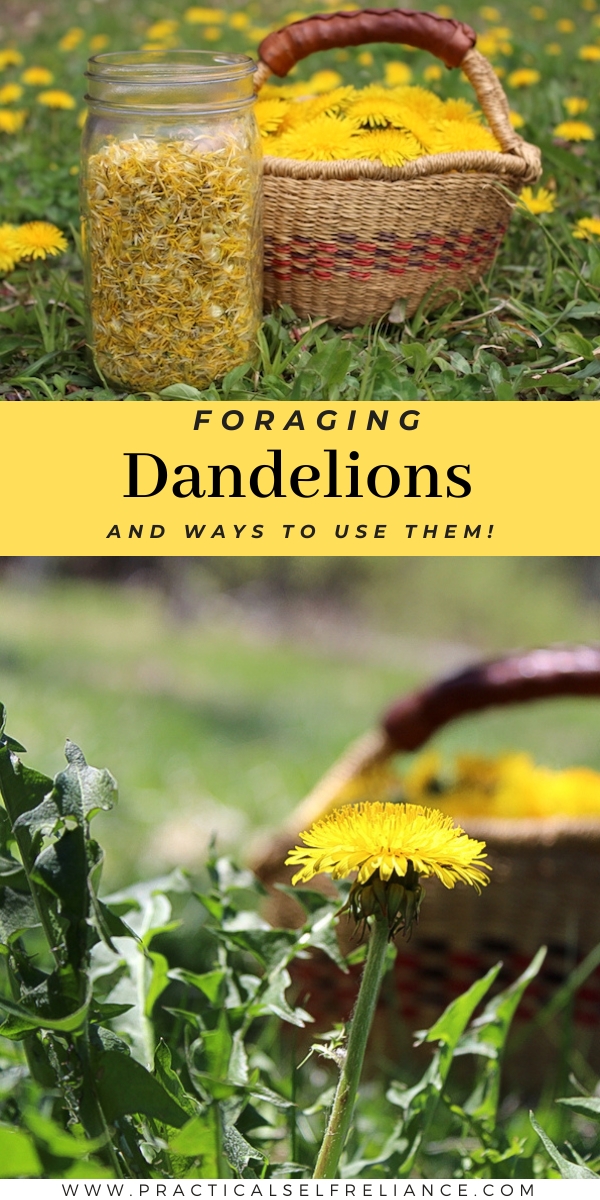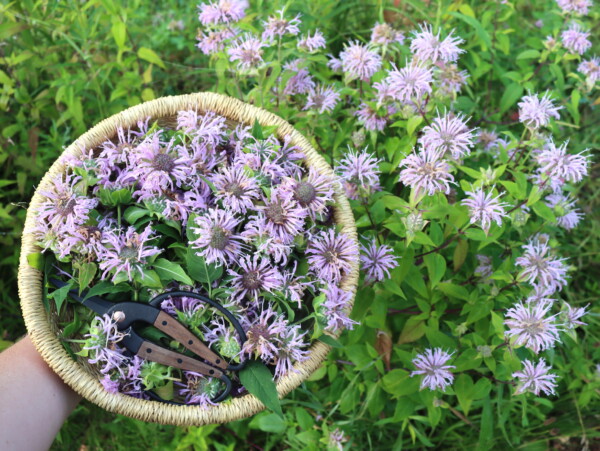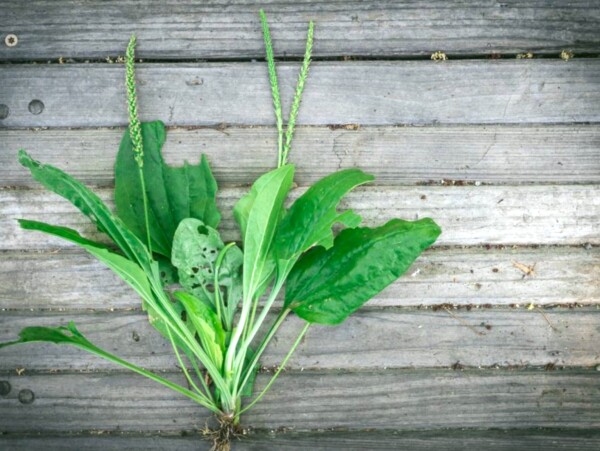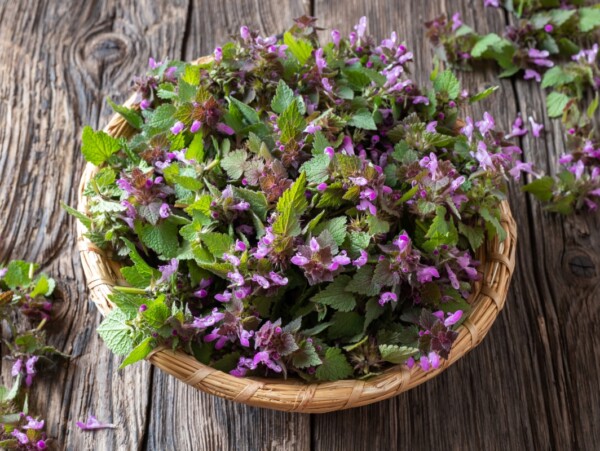Affiliate disclosure: This post may contain affiliate links. Please see our Privacy Policy.
Dandelions are one of the most common plants for beginning foragers, and they’re edible from blossom to root.
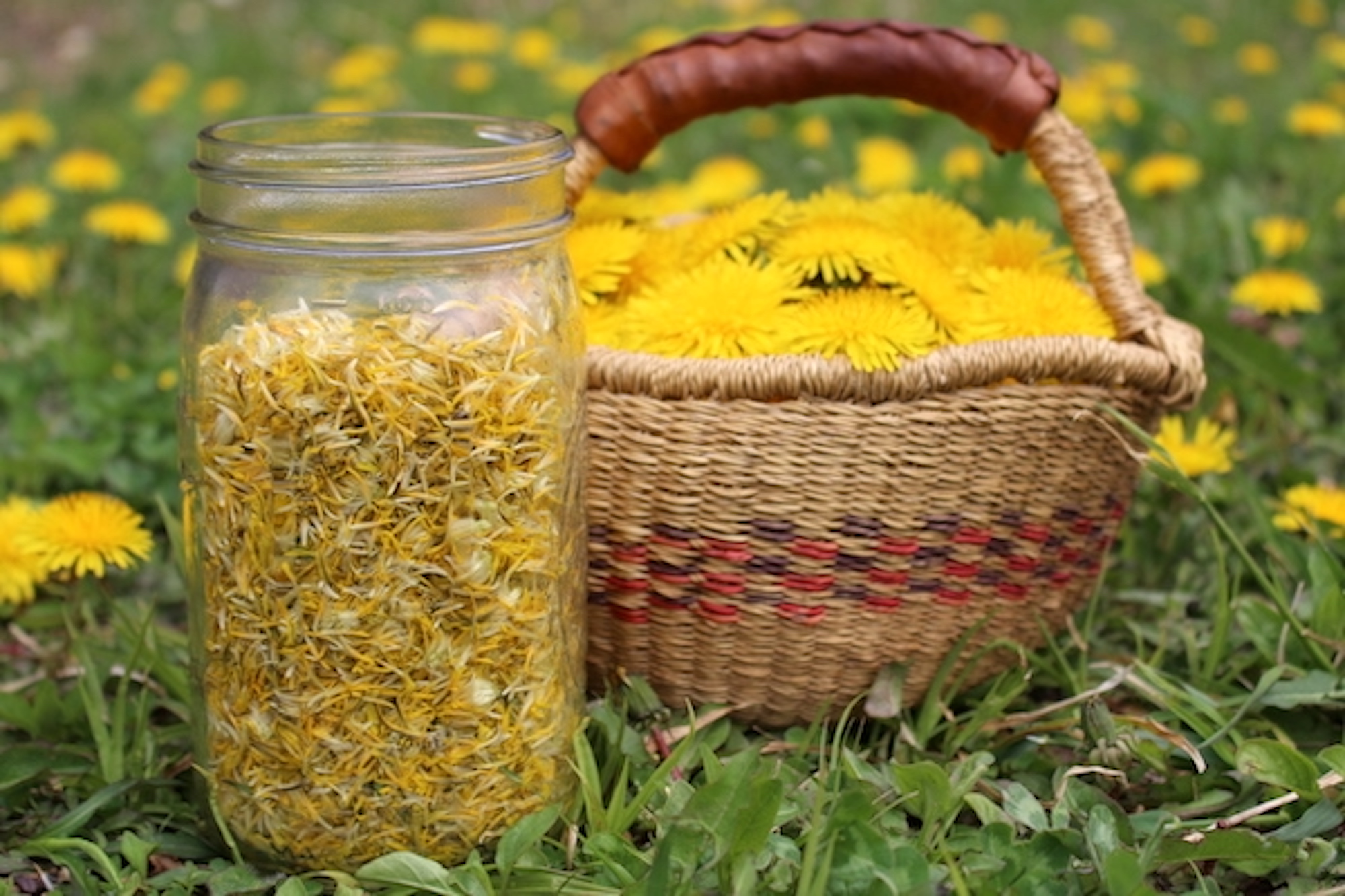
Dandelions grow just about everywhere, and they’re one of those invasive plants that people just love to hate.
It seems like every spring, homeowners wage war on this tenacious plant, but little do they know that their ancestors actually planted it for both food and medicine!
Every part of the dandelion plant is both edible and medicinal, and there are so many ways to use this underappreciated plant!
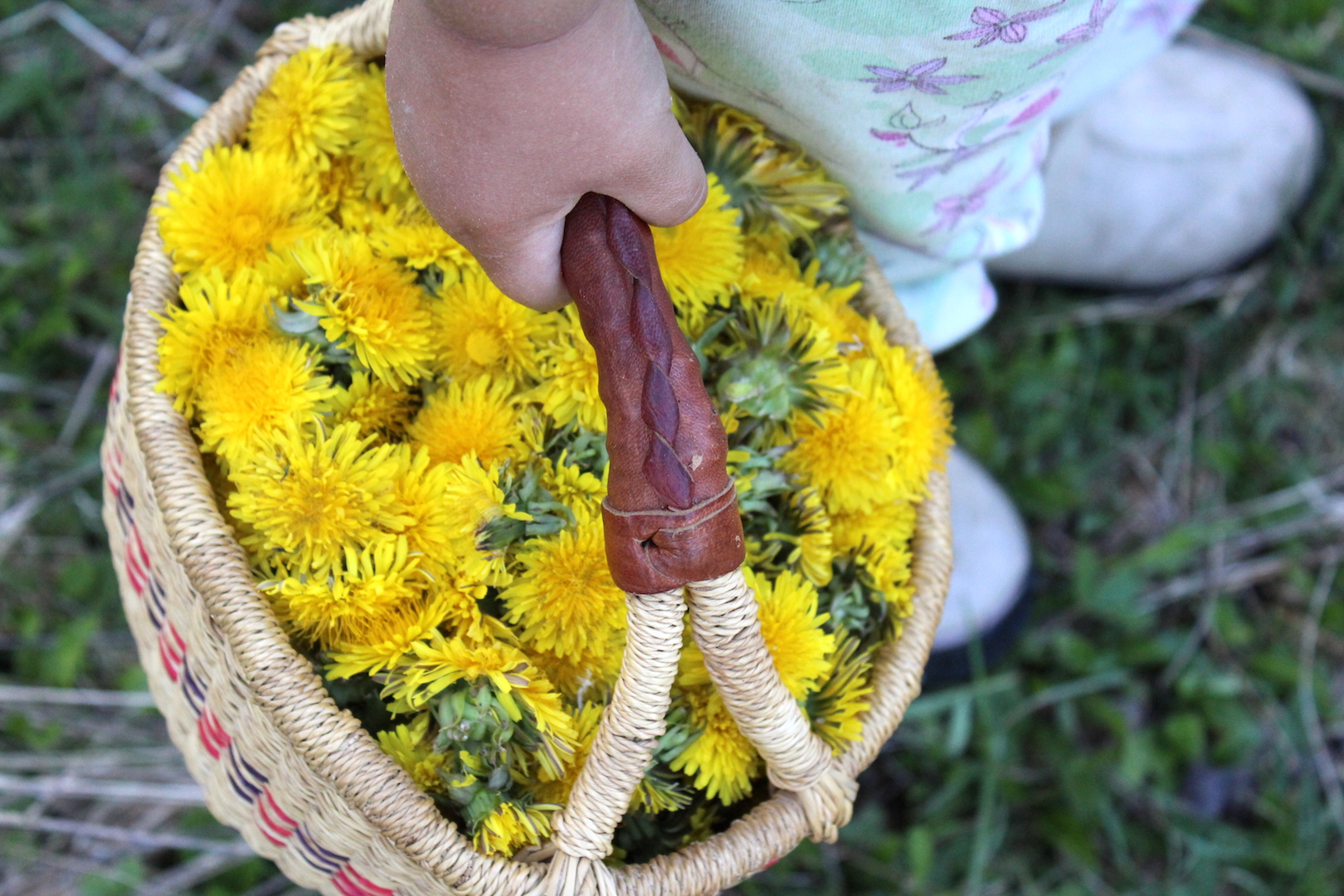
What are Dandelions (Taraxacum sp.)?
Taraxacum is a large genus of perennial, herbaceous flowering weeds that are generally known as dandelions. Taraxacum species are members of the Asteraceae or Aster or Diasy family.
Worldwide, dandelions have been known by several common names, including Earth-Nails, Lion’s-Teeth, Cankerworts, Irish Daisies, Monk’s-Heads, Priest’s-Crowns, Puffballs, Blowballs, and Milk-, Witch-, or Yellow-Gowan.
The two most common wild Taraxacum species are the Common Dandelion (Taraxacum officinale) and the Red-Seeded Dandelion (Taraxacum erythrospermum). The plants and flowers of both look more or less identical, but if you look closely, the seeds of red-seeded dandelion are…you guessed it…red instead of a tan brown.
Both of these species are native to Europe, and may have been native to the US, but due to their early introduction, it’s hard to know for sure. They may have been wind-spread to the US long ago, or they may have just come with early European settlers. Scientists are split on the question.
Whether they were or were not already present, we do know that dandelions were intentionally brought to the US by some of the first European settlers as a food source. Their early spring greens were widely used and valued for their nutrition (and much-needed vitamins after a long winter living on stored food).
While not as widespread and common, a couple of Dandelions are native to the U.S., including the California Dandelion (Taraxacum californicum) and the Horned Dandelion (Taraxacum ceratophorum).
There are also a few cultivated Taraxacum species, like the Japanese White Dandelion (Taraxacum albidum) and the Pink Dandelion (Taraxacum pseudoroseum).
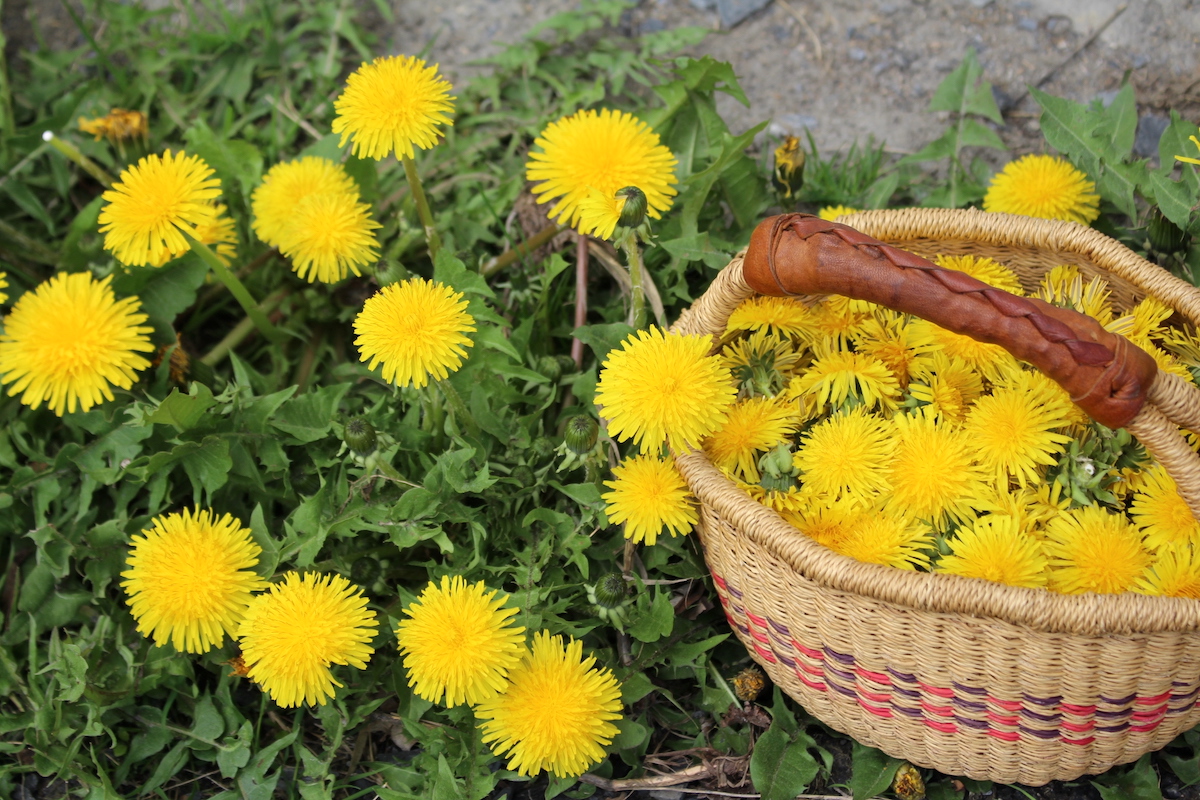
Are Dandelions Edible?
Dandelions are edible; you can eat the entire plant, including the leaves, crowns, flowers, stems, and taproot. Dandelions can be eaten raw or cooked often, the roots are boiled, roasted, dried or pickled. You can also use dandelions medicinally in external and internal preparations.
Some folks may be allergic to Dandelion pollen, especially those with allergies to the ragweed family. You may also find that the latex white sap causes skin dermatitis in certain individuals.
Avoid harvesting your dandelions from areas that may be contaminated with pesticides, herbicides, or other chemicals.
If you’re looking for specific recipes, I’ve broken them down by parts of the plant:
- 50+ Dandelion Flower Recipes
- 50+ Dandelion Greens Recipes
- 12+ Dandelion Seed Recipes
- 12+ Dandelion Root Recipes

Dandelions Medicinal Benefits
In the past, people often consumed dandelion leaves as a spring tonic. The leaves are packed with nutrients, including vitamins A, K, B6, and C, and beta carotene, thiamine, folate, and riboflavin. They also contain important minerals like iron, calcium, potassium, and manganese. In the days before refrigeration and widespread commercial shipping, the leaves provided a wonderful boost after a winter without fresh produce.
The 17th-century British botanist, herbalist, and physician Nicholas Culpeper wrote about Dandelion in his Complete Herbal. He recommended the plant for treating urinary, liver, gallbladder, and spleen issues, promoting sleep in people with fevers, and treating general poor health and emaciation.
Some Native American tribes also used Dandelions medicinally. Some records indicate that the roots and leaves were both used to create a tea for treating kidney disease, skin problems, heartburn, and upset stomachs.
Many herbalists still employ Dandelion roots, leaves, and flowers in their remedies today. Dandelions’ bitter flavors are believed to help with digestive issues. Herbalists also still use these plants for liver and kidney issues.
Modern scientists are exploring Dandelion’s properties to treat various conditions. A recent 2022 study found that the whole plant contains anti-inflammatory and anti-oxide active substances that help alleviate gastrointestinal immuno-inflammation.
An extract from Dandelion roots, which have a long history in traditional herbal medicine, has also shown some promise against cancer. Researchers found that in cancer cell models, “aqueous dandelion root extract induced programmed cell death (PCD) selectively in > 95% of colon cancer cells.”
Dandelion extract has also been used in Chinese traditional medicine to treat influenza. A modern look at this treatment confirmed that Dandelion extract does possess anti-influenza properties.
Further, several modern studies have worked to explore the health properties of Dandelions generally. Many, like this one published in 2017, have left researchers hopeful that they will be able to use Dandelions to develop antimicrobial and anticancer drugs.
My favorite way to use dandelions medicinally is in a simple dandelion tincture.

Where to Find Dandelions
While many are native to Eurasia, Dandelion species have naturalized worldwide, including in all 50 U.S. States, Mexico, and almost all Canadian provinces. In some areas, they are considered invasive or noxious weeds.
Dandelions are incredibly common, and while they’re especially productive in areas with rich soil, good moisture, and full sun, they’re capable of adapting to various upland, non-arid habitats. They will tolerate full sun to heavy shade and almost any soil type.
You’ll likely find dandelions in disturbed habitats like lawns, gardens, hayfields, pastures, parks, and empty lots. They may also grow scattered through the woods or along forested roads and trails.
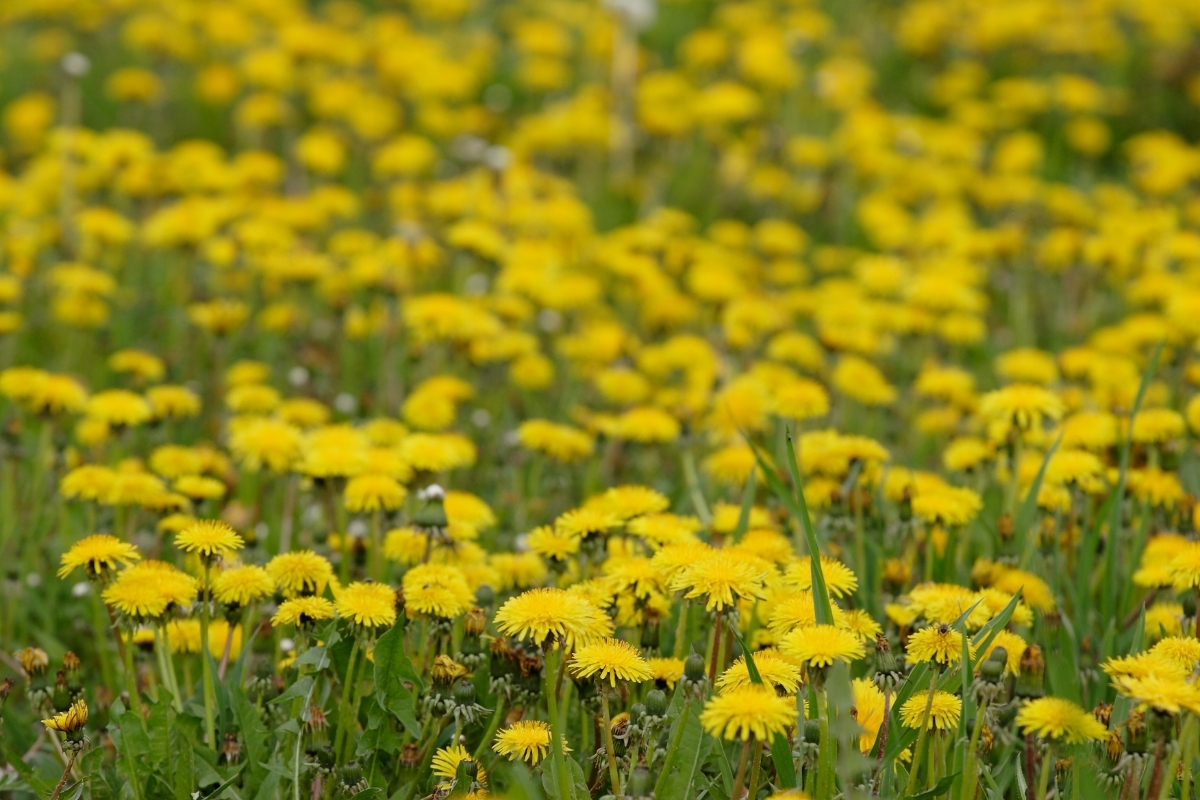
When to Find Dandelions
Dandelions are perennial plants; in warm climates, the basal rosettes of leaves may be present year-round. In colder climates, the plants go dormant in the winter and appear in very early spring.
Dandelions are also very early to flower and may begin blooming as early as March in warmer areas. They will continue to bloom throughout the summer until the weather gets too cold and the plants go dormant.
Sustainably Harvesting Dandelions
Every year, I have people message me saying, “Don’t eat the dandelions; save them for the bees!” I don’t disagree…our pollinators are vitally important. We literally started our homestead with the goal that it’d be a pollinator and amphibian sanctuary, first and foremost.
I get it.
Here in rural neighborhoods, most of us can harvest dandelions by the wheelbarrow full without really denting the population…and on our land, I could harvest several tractor-trailer loads each year without making a dent. We’re basically dandelion farmers.
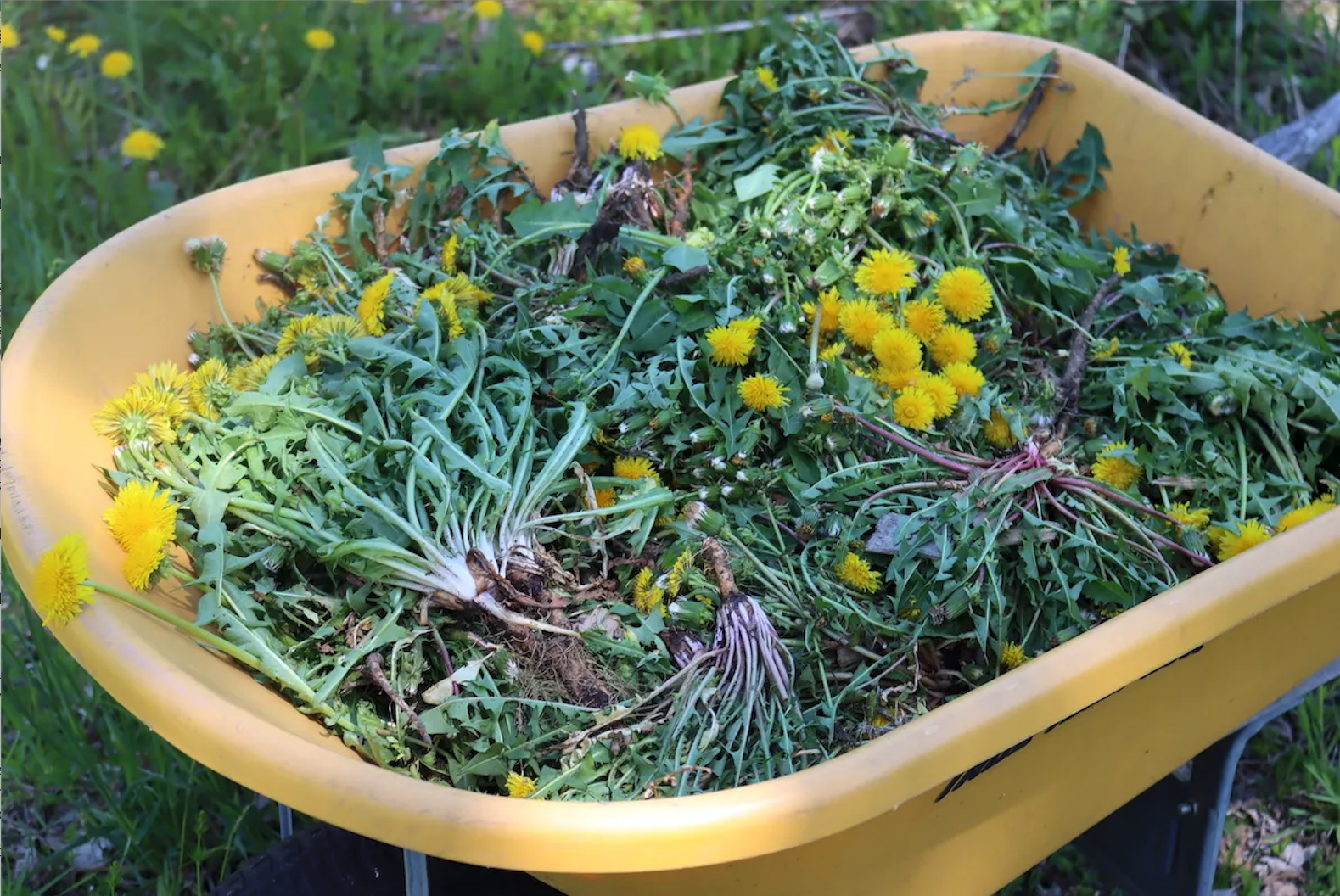
Educating people about why they should leave dandelions (and other wildflowers) on their lawns and not spray their land is so important to me that I actually devote a large amount of space on my DIY blog, specifically to edible flowers. The whole point of this dandelion evangelism is to foster an appreciation for these important pollinator food sources, so that there are more of them.
Ironically, often the best way to get people to do something for pollinators/birds/amphibians/butterflies/etc is to first convince them that it’s in their own best interest.
(I talk about this extensively in my article on why you should eat milkweed in order to help the monarchs.)
I know not everyone lives in a dandelion-filled world, and that many of you live in tightly controlled suburbs where heavily sprayed lawns are the norm. Still, even there, the best thing you can do for the bees is to not spray your own lawn, and then make a big batch of dandelion jelly for your neighbors (and maybe a few bottles of dandelion wine while you’re at it).
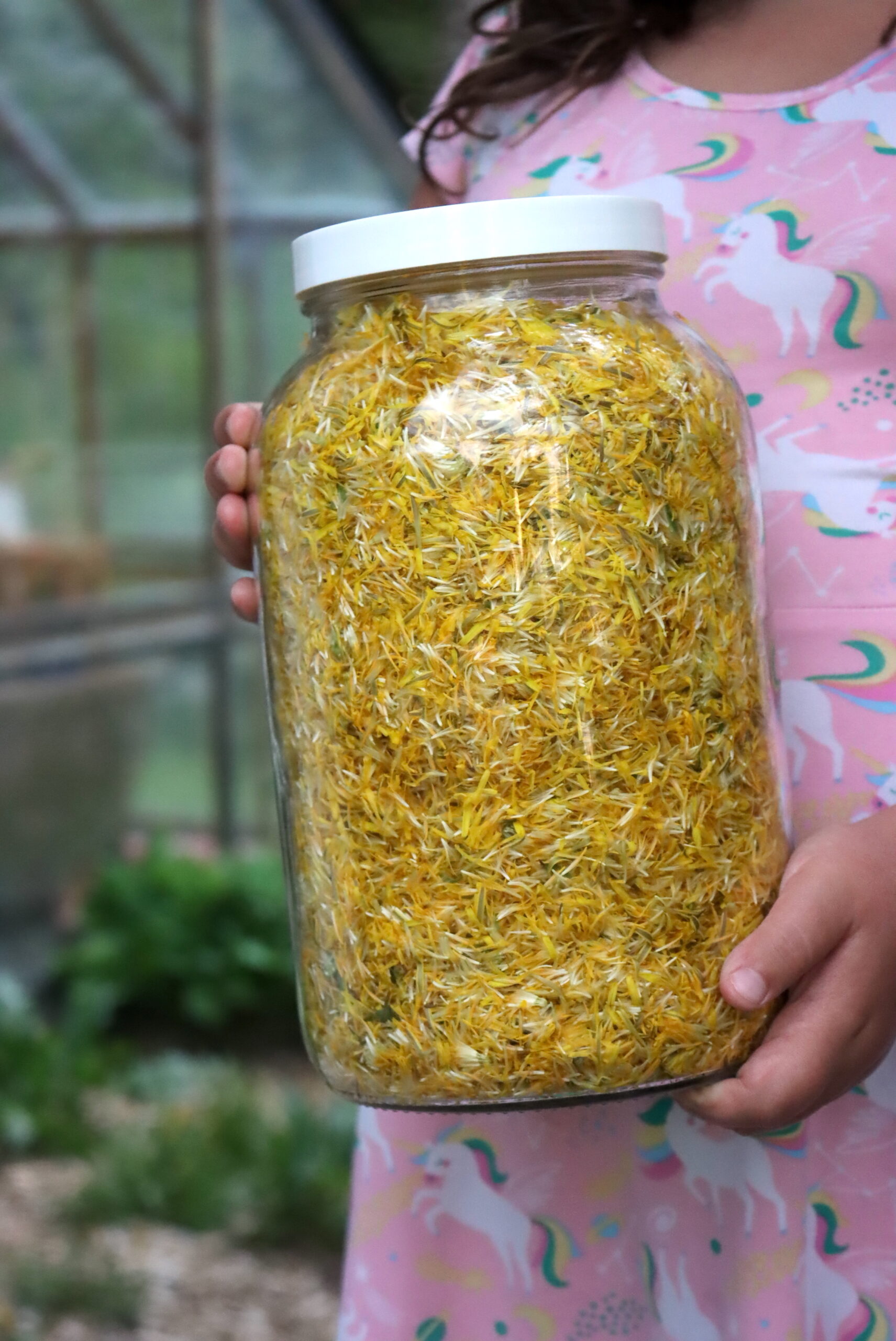
Show them that dandelions are more than just weeds, next year you may have a few more unsprayed yards on your block. I actually have people email me every year looking for dandelion seeds, so they can actually PLANT DANDELIONS, just so they can make these recipes.
That, my friends, is my definition of success for the pollinators.
Identifying Dandelions
Almost everyone will tell you that they know how to identify a dandelion. However, there are more species of dandelion than just the Common Dandelion (Taraxacum officinale). Dandelions also have several look-alikes, especially when the plants aren’t in flower.
They are generally easiest to identify when in flower. They have basal rosettes of leaves, hollow stems, and often have yellow to orange composite flowers though some cultivated varieties like Pink Dandelion (Taraxacum pseudoroseum) may vary more widely in color. They’re also well known for their fluffy, spherical seedheads.
I have a whole article where I discuss dandelion identification in detail, along with pictures of more than 12 dandelion look-alikes. This is just a quick ID guide, and I’d suggest you read my post on Dandelion identification (and avoiding look-alikes) for more detailed information.
The main identification features of dandelions include:
Dandelion Flowers
- Bright yellow to orange flowers
- flowerheads are ¾ to 2 inches in diameter
- One flower per stem
Dandelion Leaves
- Basal Rosette Leaf pattern
- No leaves on the Stem
- Leaves are 2 to 16 inches in length
- Leaves are usually narrower at the base and wider towards the tip
Dandelion Stems
- Hollow stems (Always, key ID characteristic)
- Leafless Stems
- Stems are not branching, and only have one flower per stem
- Stems 4 to 18 inches in height, but more commonly 6 to 8 inches
- Stems are light green, sometimes tinged with red
- Stems may be hairless and smooth or covered with fine white wool
- When broken, the stems exude a white latex sap.
Dandelion Roots
- Large edible taproot
- Usually 6 to 24 inches long, longer in light soil
Dandelion Seeds
- Spherical fluffy white seedheads
- Single seed attached to white “parachute-like” cluster of fine hairs for wind dispersal.
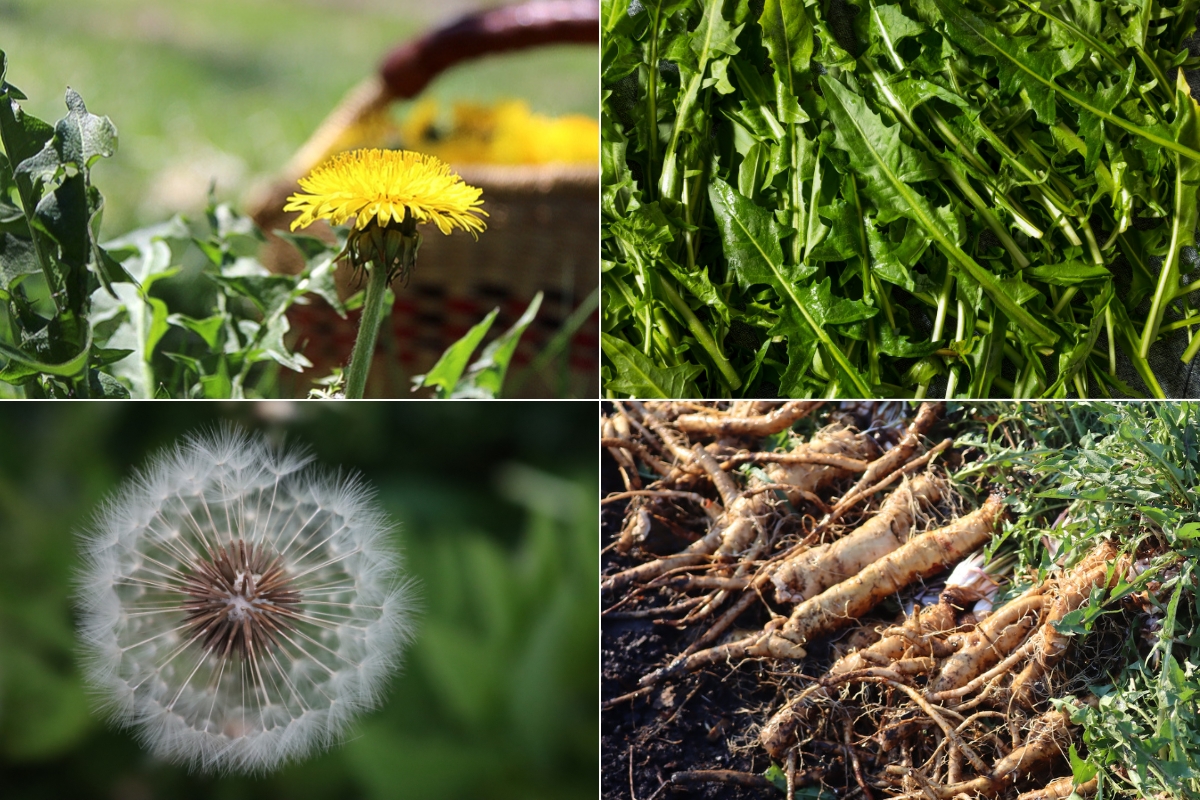
Dandelion Look-Alikes
While Dandelions seem like easy plants to identify, there are actually many look-alikes. While they are mostly harmless or even edible, it’s still a good idea to make sure you can differentiate them. Again, I’d suggest reading through my detailed article on Dandelion identification (and avoiding look-alikes) for more detailed information, but here is a quick list of the most common dandelion look-alikes:
- Coltsfoot (Tussilago farfara)
- Cat’s Ear (Hypochaeris radicata)
- Fall Dandelion (Scorzoneroides autumnalis)
- Narrowleaf Hawksbeard (Crepis tectorum)
- Meadow Hawkweed (Hieracium caespitosum)
- Rough Hawkbit (Leontodon hispidus)
- Sow Thistle (Sonchus spp.)
- Wild lettuce (Lactuca virosa)
- Prickly Lettuce (Lactuca serriola)
- Beach False Dandelions (Agoseris apargioides)
- Mountain Dandelion (Agoseris glauca)
- False Prairie Dandelions (Nothocalais troximoides)
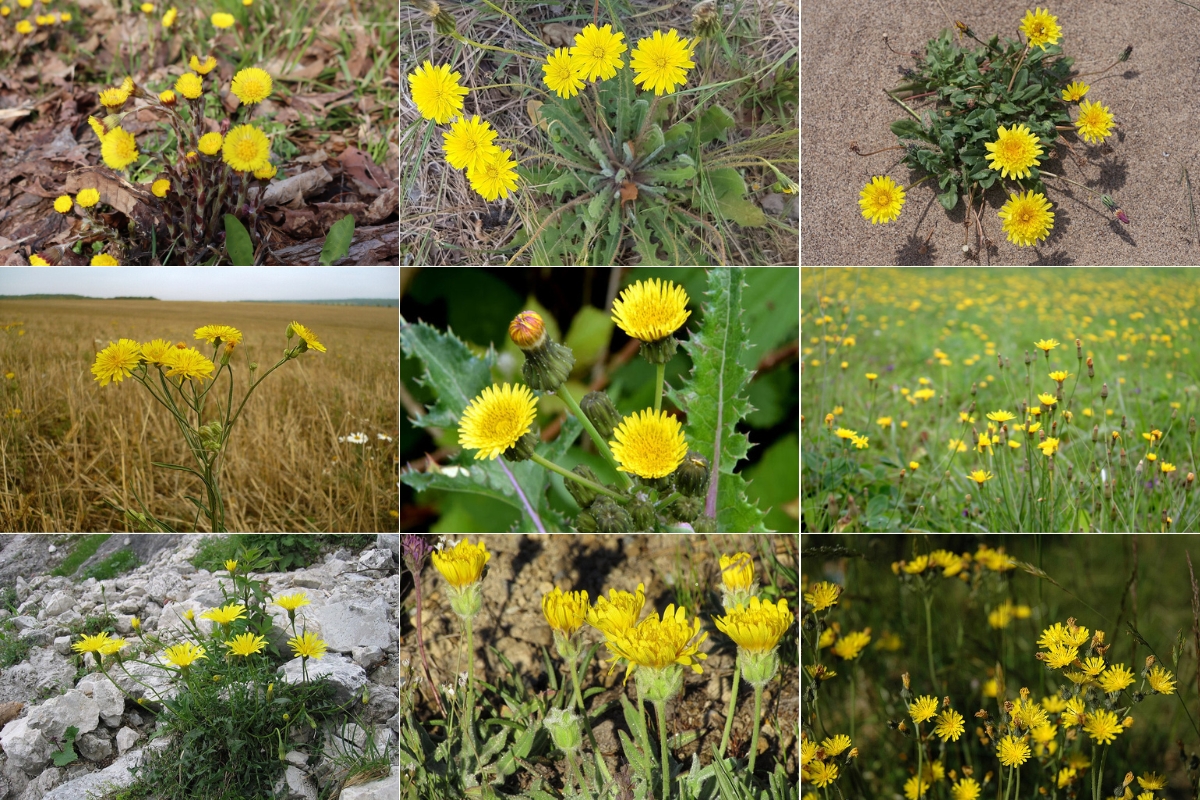
Ways to Use Dandelions
Dandelion is often overlooked by foragers for its abundance or bitter flavor, but it’s a great family-friendly plant to know and use when properly prepared.
Dandelion leaves are one of the easiest parts of the plant to harvest and find for a large part of the year. Harvesting leaves in the spring before the plants have flowered is best. Look for plants that are growing in rich, moist soil. If possible, avoid harvesting leaves from plants that are in tough, dry soils, and full sun, as these tend to be tougher and more bitter. They also tend to lay flatly on the ground and are generally dirtier.
Dandelion leaves are bitter but can be added sparingly to salads with a combination of milder greens. They also make an excellent potherb and can be steamed or boiled, which helps remove some of the bitterness. You can serve them by themselves as a side or add them to dishes like soups and stir-fries.
In the spring, you can also harvest Dandelion crowns. These form just above the taproot and are made of several young, tender yellowish-white leaves and embryonic flower buds. If you’re harvesting the whole plant, you can cut these off in the kitchen or use foraging expert Sam Thayer’s method and “gouge” them out of the plant while it’s still in the ground. You could try this with a knife or other tool, but Sam uses a modified sharpened teaspoon. This method allows the taproot to stay intact and lets the plant survive.
Be sure to wash your dandelion crowns and remove the outer leaves to get any dirt and grit off. Then they can be eaten raw or cooked, similarly to the way you would the greens.
You can also use the cheerful yellow flowers of Dandelions to make some fun dishes! They can be eaten raw or cooked or used to make your own fermented beverages. They’re an excellent choice for adding a bit of natural decoration to baked goods.
While they’re certainly a bit of work to dig, Dandelion roots are often worth the effort. Roots from one-year-old plants are a bit parsnip-like and can be used similarly to other root vegetables. The roots become tougher as the plants age, but when roasted make a truly delicious tea and coffee substitute.
You can easily incorporate Dandelions into your herbal medicine practice, too. Try using any part of the plant to create teas or tinctures. These can be used to soothe digestive issues, help with kidney problems, or as a mild diuretic.
Externally, Dandelions are wonderful additions to salves, lotions, and soaps. Herbalists use Dandelion salve for treating various aches and pains and skin irritations.
Dandelion Recipes
- One of the simplest ways to enjoy dandelion greens is in a dandelion pesto.
- If you’re harvesting the crowns of Dandelions, The Forager Chef has a stunning recipe for Pugliese Inspired Dandelion Hearts.
- Capture the essence of summer with our classic Dandelion Wine recipe, or grab some buds before they bloom to make foraged Dandelion Capers.
- Bottle the health benefits of Dandelions with our simple Dandelion Tincture.
- Try creating your own Dandelion Magnesium Lotion with this recipe from The Nerdy Farm Wife for restless leg syndrome, leg cramps, backaches, and other soreness.
- Get your kids involved with foraging and bake these fun Dandelion Flower Cookies from Adamant Kitchen.
- If you’ve got the time to dig a lot of roots, Dandelion coffee is well worth the effort. Try this tasty beverage with this Dandelion coffee recipe.
- This summer, add a surprising twist to a classic side with this Dandelion Green and Red Potato Salad from Straight from the Farm.
